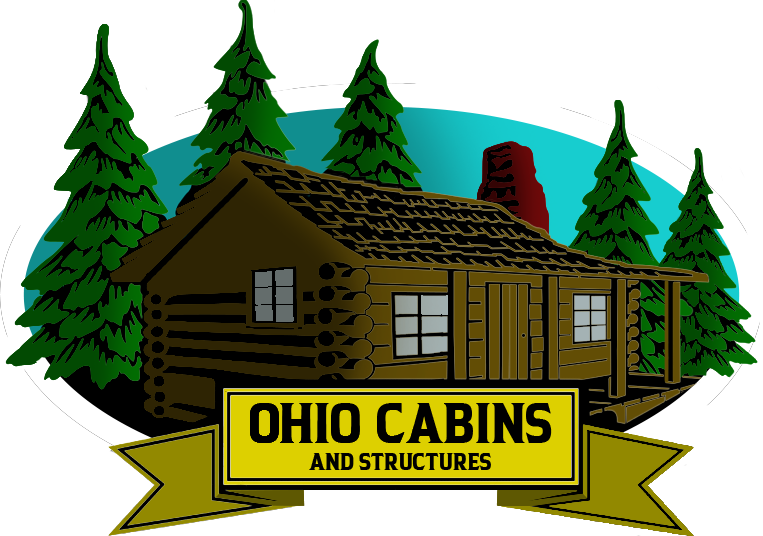Tiny homes continue to capture attention as an affordable and eco-friendly housing solution. While their small size raises questions about comfort and functionality, one of the most common inquiries is whether tiny homes have plumbing. The short answer is yes, most tiny homes include plumbing systems for running water, showers, and toilets. However, the type and complexity of the system depend on how and where the home is built. At Ohio Cabin and Structures, we design and build small, efficient living spaces that include all the comforts of traditional homes, including plumbing. Whether you’re planning a stationary build or a mobile tiny house on wheels, understanding how plumbing works in these compact spaces helps you make informed decisions about design and lifestyle.
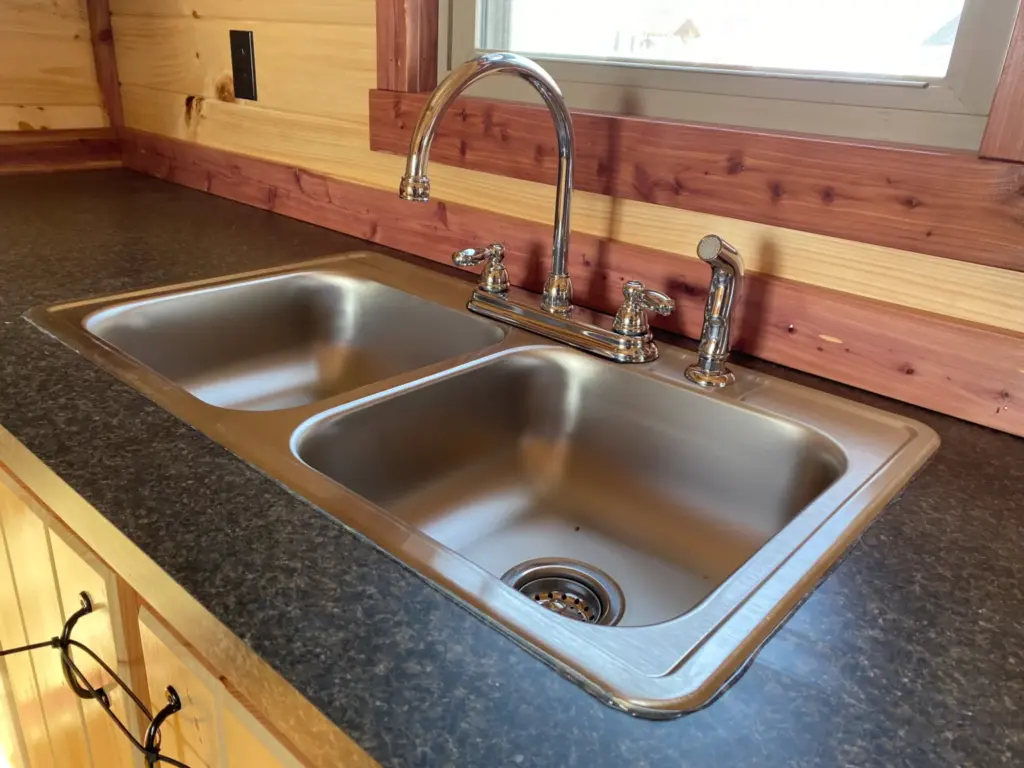
Do Tiny Homes Have Traditional Plumbing?
Many tiny homes feature plumbing systems similar to standard houses, including hot and cold running water, sinks, showers, and flushing toilets. The main difference lies in scale and setup. A tiny home’s plumbing system is usually smaller, more compact, and often designed for flexibility, especially for those who want to live off-grid or move frequently. The main components of a plumbing system, freshwater supply, drainage, and waste disposal, are all present in most modern tiny homes. These systems can either connect to a city water line or function independently using tanks and pumps.
How Water Gets Into a Tiny Home
Tiny homes get water from two main sources: direct hookups or water storage tanks. Hookups are ideal for stationary homes parked in locations with utility access, such as RV parks or residential lots. You can connect a hose from a spigot or water line directly to the home’s plumbing system, just like an RV. For mobile or off-grid homes, freshwater tanks are the most common solution. These tanks hold between 20 and 100 gallons of water and use an electric pump to deliver water pressure throughout the system. Refillable tanks allow homeowners to stay off-grid for days or even weeks, depending on usage.
Hot Water Systems in Tiny Homes
Hot water in tiny homes comes from the same types of heaters used in larger houses, only smaller and more efficient. The most popular option is a tankless water heater, which heats water on demand. This design saves both energy and space, two essential factors in small living. Some homeowners use electric mini-tank water heaters, which store a few gallons for quick access. Others opt for propane-powered systems that work well off-grid. Solar water heaters are another sustainable option, ideal for those who want to minimize energy costs and environmental impact.
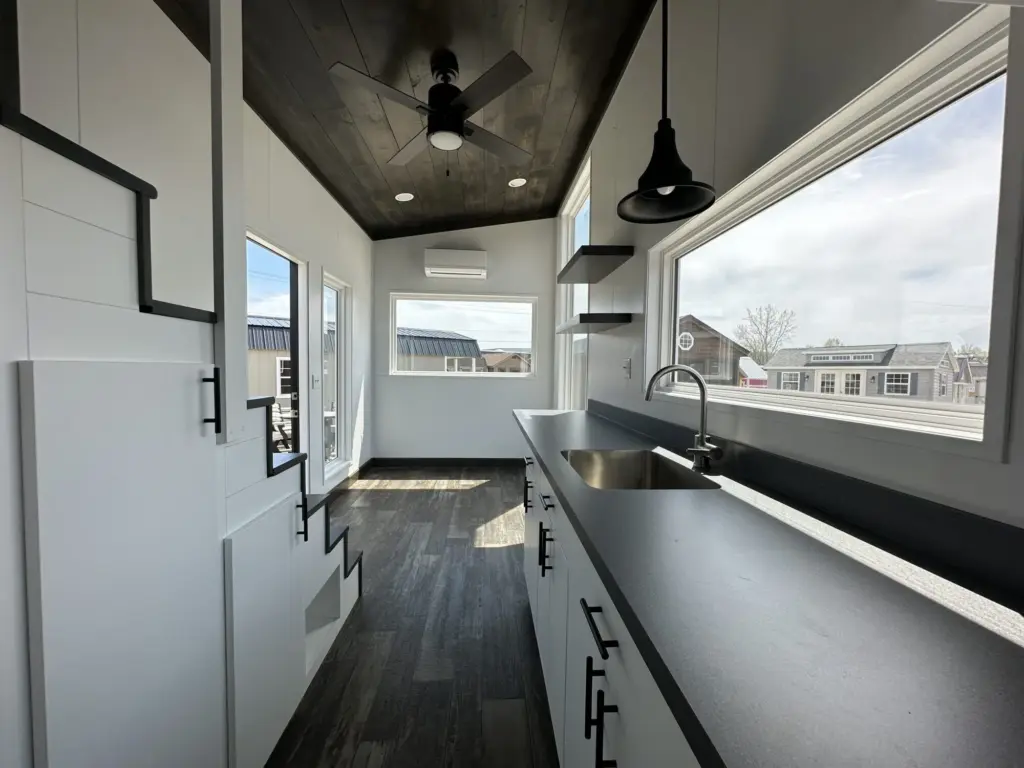
Where the Wastewater Goes
All plumbing systems need a place for wastewater to go. Tiny homes manage this with two main systems: direct connections to sewer lines or self-contained tanks. Homes parked on land with full hookups can connect to municipal sewer systems, making waste disposal as simple as in a traditional house. Off-grid or mobile homes, on the other hand, use graywater and blackwater tanks. Graywater comes from sinks and showers, while blackwater comes from toilets. These tanks must be emptied periodically at approved dump stations, much like RV systems. Some owners reuse graywater for irrigation after proper filtration.
Do Tiny Homes Have Toilets?
Yes, tiny homes have toilets, and homeowners can choose from several types. The most common are flush toilets, composting toilets, and incinerating toilets. Each has its pros and cons depending on your setup. Flush toilets work best for tiny homes connected to water and sewer lines. Composting toilets are ideal for off-grid living, turning waste into compost using natural processes. Incinerating toilets burn waste into sterile ash using electricity or propane, offering a water-free solution.
Plumbing Layout in a Tiny Home
Because space is limited, plumbing in tiny homes is carefully planned to maximize efficiency. The bathroom, kitchen, and water heater are usually close together to minimize pipe length. This setup reduces heat loss, water waste, and construction costs. Pex tubing is the preferred material for water lines because it’s flexible, affordable, and resistant to freezing. Unlike rigid metal pipes, Pex can bend around corners easily, which is perfect for compact floorplans.
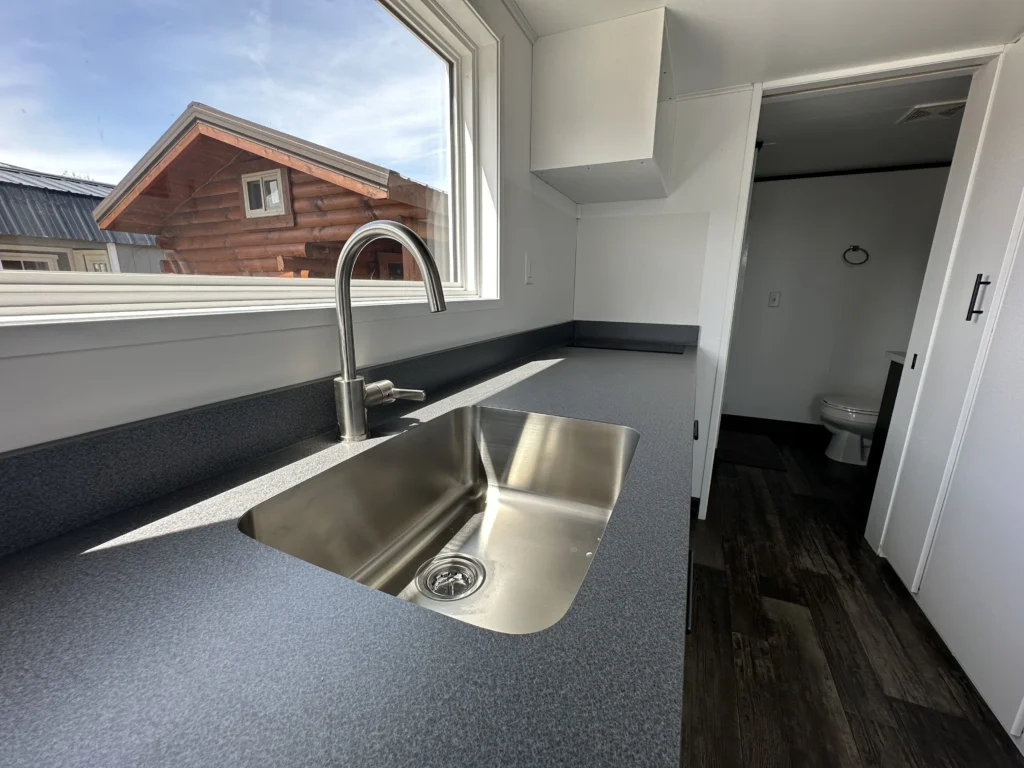
Off-Grid Plumbing Solutions
Off-grid plumbing systems are designed for homes without direct access to utilities. They rely on tanks, pumps, and natural waste systems. Water can come from rainwater collection systems, wells, or transported containers. Rainwater collection is especially popular since it provides a renewable water source with minimal infrastructure. Off-grid plumbing often pairs with solar power and composting toilets to create self-sufficient homes. These systems take more planning but offer independence and lower utility costs over time. Many off-grid homeowners add filtration systems or UV purifiers to ensure clean, safe water.
Graywater and Blackwater Explained
Graywater includes used water from sinks, showers, and washing machines. It’s usually less contaminated and can be reused for landscaping or toilet flushing after treatment. Blackwater, from toilets, contains solid waste and requires proper disposal or treatment. Managing graywater and blackwater separately allows tiny homeowners to recycle some water and reduce overall waste. Proper system design ensures efficiency and environmental safety.
How Tiny Homes Drain Water
Drainage works by gravity or pump systems. In stationary homes, gravity drains are installed with a downward slope that carries wastewater to a sewer or septic system. In mobile units, pump-assisted drains push wastewater into holding tanks. For tiny homes parked long-term, a septic tank or connection to an existing sewer line provides the most convenience. Regular inspections and cleanings keep these systems running smoothly.
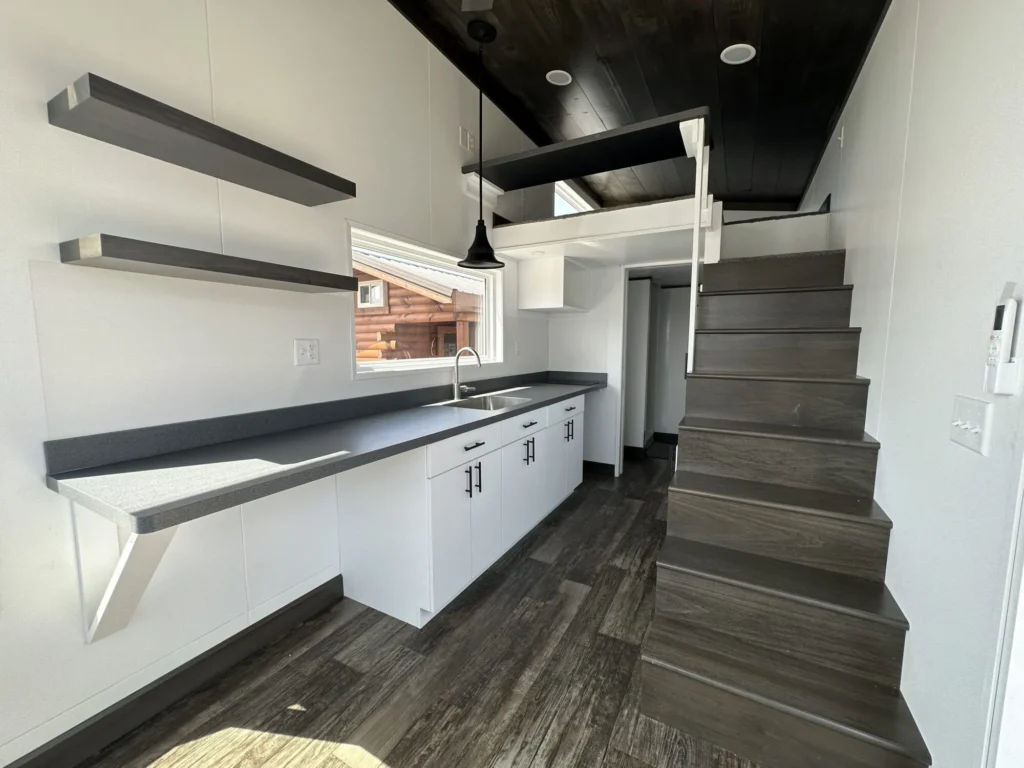
Winter Plumbing Considerations
Cold weather poses challenges for tiny home plumbing, especially in northern climates. Pipes and tanks can freeze if not insulated properly. Builders often use heat tape, foam insulation, and enclosed plumbing runs to prevent freezing. Some even install systems inside the heated space to keep them warm during winter. Portable water tanks should be drained or kept in insulated compartments when temperatures drop below freezing. A small investment in pipe insulation goes a long way in protecting the system from damage.
How Much Plumbing in a Tiny Home Costs
Plumbing expenses for tiny homes vary depending on design and system type. On average, plumbing installation costs range from $3,000 to $8,000. Hookups to existing utilities are cheaper, while off-grid setups with tanks and pumps cost more. Composting toilets start around $1,000, while full flush systems with holding tanks can exceed $3,000. Tankless water heaters cost between $600 and $1,200. These prices can change depending on quality and brand, but overall, tiny home plumbing is far more affordable than traditional home systems.
Maintaining Tiny Home Plumbing
Regular maintenance ensures plumbing systems work efficiently. Check for leaks, especially at connections and joints. Clean water filters and empty tanks as needed. Flushing the lines occasionally prevents buildup in pipes and extends the life of the system. In winter, draining the system before long absences prevents freezing. Keeping a simple maintenance schedule helps avoid costly repairs and ensures you always have access to running water.
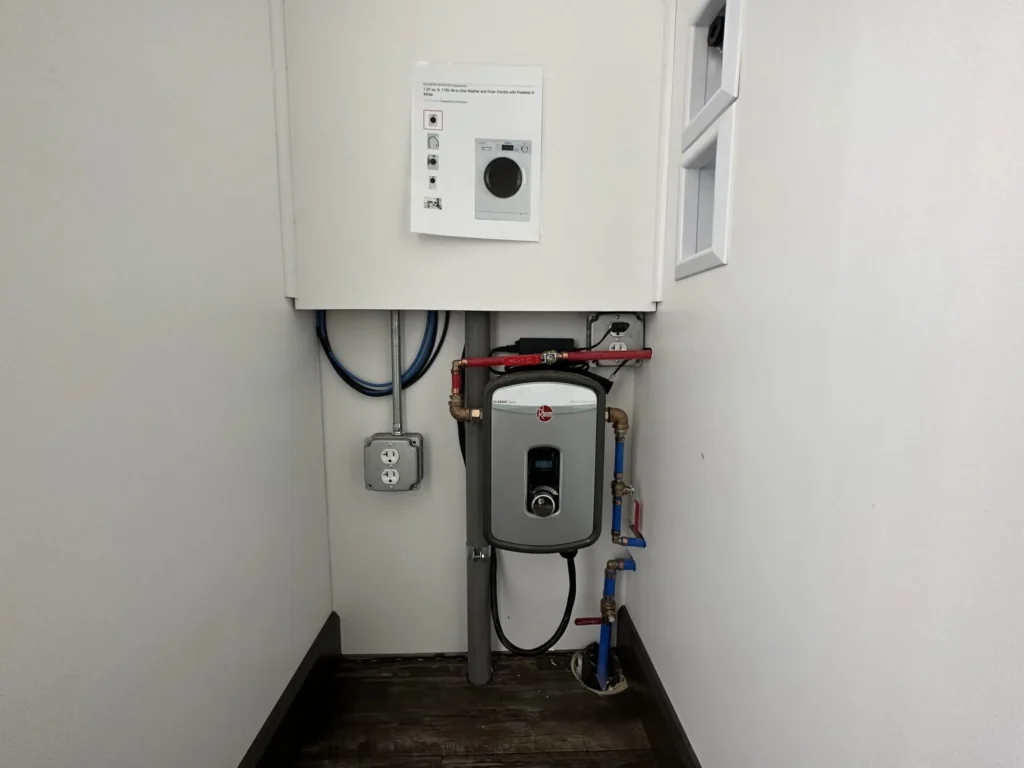
Legal and Zoning Considerations
Some municipalities have specific requirements for plumbing systems in tiny homes, especially those used as permanent residences. Building codes may dictate what type of sewage system or water hookup is allowed. Always check local regulations before beginning your build. For more details on legal requirements, check out Ohio Cabin and Structures’ guide on building permits for tiny houses. Understanding these regulations early helps you avoid delays and ensures your plumbing meets safety standards.
Connecting to Utilities vs. Living Off-Grid
The choice between connecting to utilities or going off-grid depends on lifestyle and location. Hooking up to existing water and sewer systems provides convenience, while off-grid plumbing offers independence. Many homeowners choose a hybrid system that allows both, giving them flexibility to move or stay stationary. This versatility is one of the biggest appeals of tiny home living. It allows people to adapt their homes to different environments and needs without sacrificing modern comfort.
Eco-Friendly Plumbing Practices
Tiny homes naturally promote sustainability, and plumbing can enhance that further. Low-flow faucets, showerheads, and dual-flush toilets reduce water consumption. Using rainwater systems or graywater recycling cuts utility use and supports an eco-conscious lifestyle. Incorporating sustainable systems not only saves money but also supports environmental health. For more background on water management and sanitation systems, see Wikipedia’s detailed plumbing overview.
How Builders Customize Plumbing Systems
Each tiny home is unique, and builders tailor plumbing to the client’s preferences and site conditions. Stationary models often have full plumbing with standard fixtures, while mobile ones use compact systems to conserve space. Builders also plan for easy access to pipes and tanks for future maintenance. At Ohio Cabin and Structures, our team designs plumbing systems that maximize efficiency and reliability. Whether your goal is a fully off-grid home or a connected model, we ensure every installation meets your comfort and lifestyle needs.
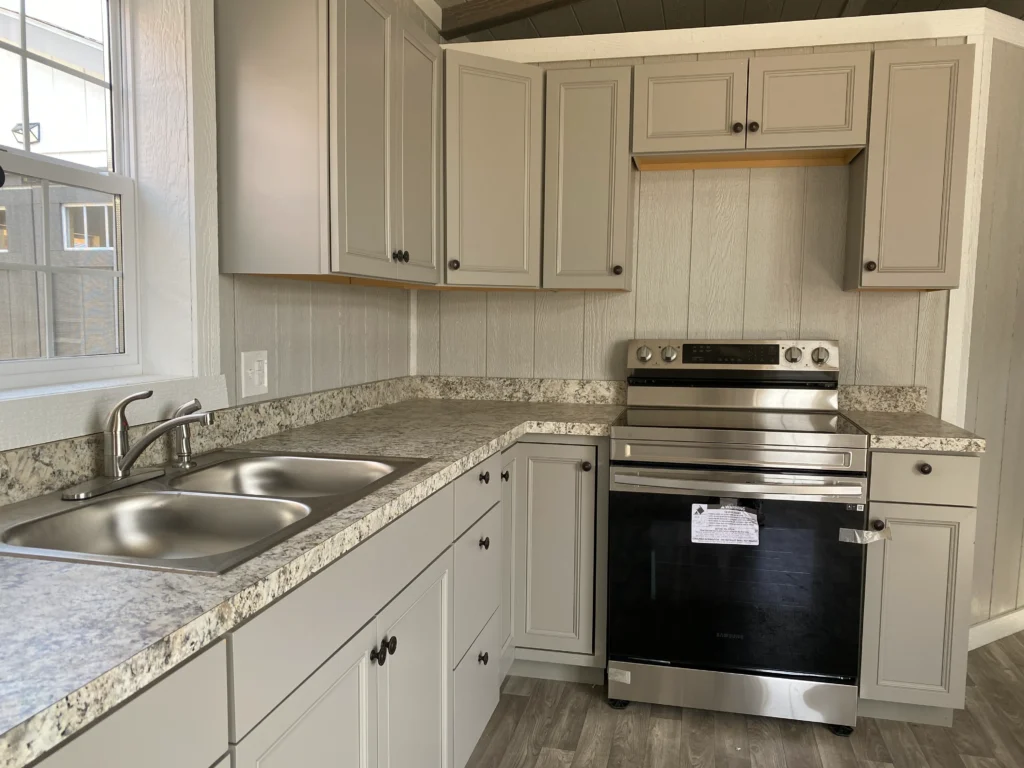
Advantages of Plumbing in Tiny Homes
Modern plumbing turns tiny homes into fully functional spaces. Having running water for cooking, cleaning, and bathing adds comfort and practicality. Self-contained plumbing also supports independent living for those choosing remote or off-grid lifestyles. Efficient systems save both space and water, aligning perfectly with the minimalist values of tiny home living. Properly installed plumbing lets homeowners enjoy the simplicity of small-space living without sacrificing modern convenience.
Final Thoughts
Yes, tiny homes have plumbing, and with today’s technology, these systems are efficient, reliable, and adaptable. Whether you choose traditional hookups or off-grid setups, you can enjoy the same comfort as in a larger house. Proper planning and professional installation make all the difference in performance and maintenance.
For expert help building your next tiny home or learning about plumbing options, visit Ohio Cabin and Structures and connect with specialists who can turn your small home vision into a functional, beautiful reality.
